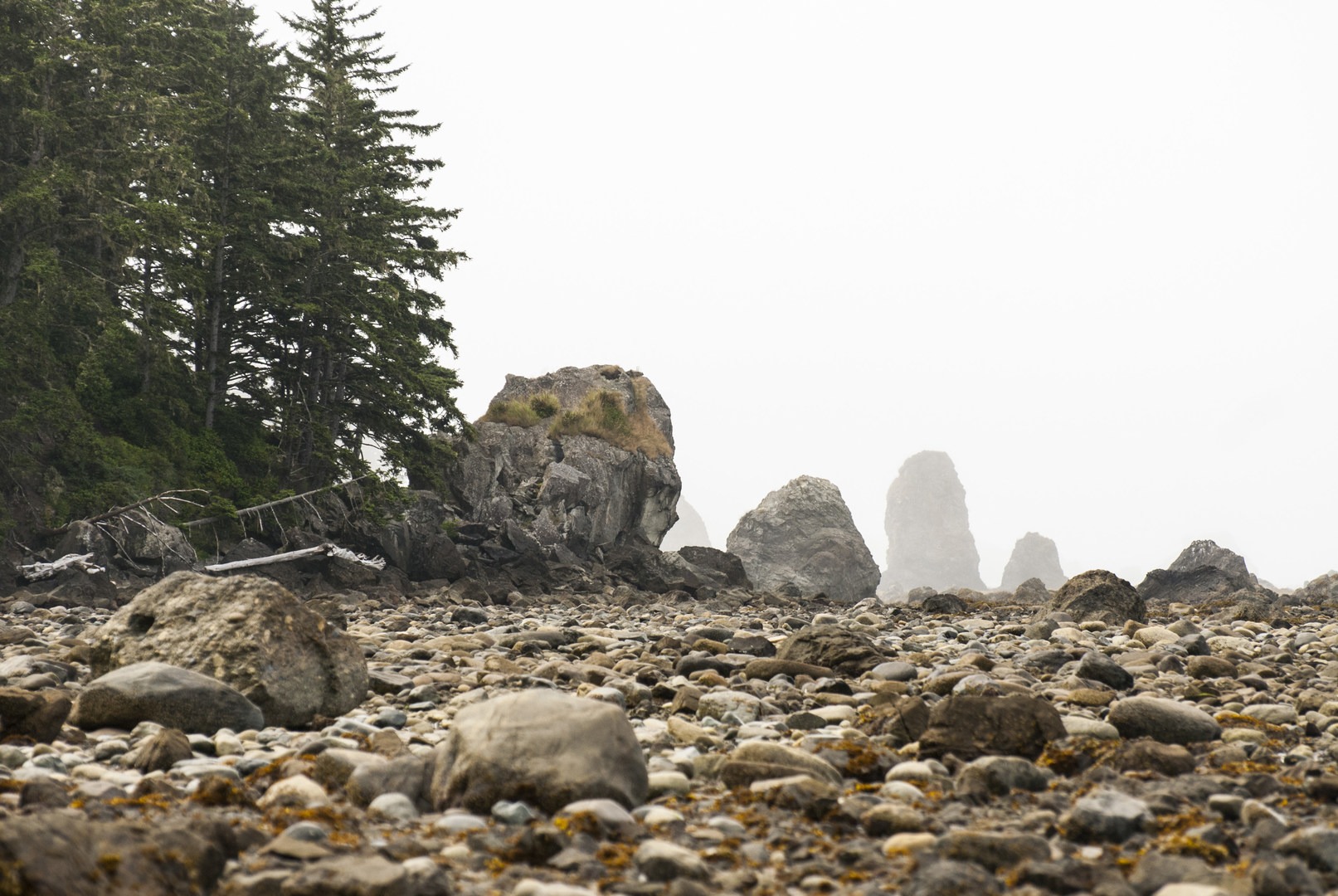You are here
This 9.5-mile hike provides a superb introduction to the coastal region of Olympic National Park. This hike is a loop hike, but it is called a triangle for its three prominent legs: the North Sand Point Trail and the Cape Alava Trail both originate at Ozette Campground, each reaching the coast at points that are approximately 3 miles apart; walking the coastline between the points connects the two trails to make the triangle-shaped loop.
Many choose to hike out on the Cape Alava Trail and return on the North Sand Point Trail, which puts the predominantly northerly wind at your back as you walk south down the coast. This is the direction taken for this adventure. If you are making this trip as an overnight, however, note that campfires are prohibited between Wedding Rocks and Yellow Banks; this may make the campsites at and just south of Cape Alava more attractive options, which may in turn shape your itinerary and traveling direction. Wilderness camping permits are required for such a trip. However you walk it, be prepared for miles of lush coastal rainforest and heaps of gorgeous views. If you are in the Ozette area of the park, this hike is certainly one of the highlights of the area.
Leaving Ozette Campground, you'll quickly cross the Ozette River and soon thereafter meet the junction that indicates the two trails. Stay right to head for Cape Alava and follow the trail as it plunges into the old-growth western redcedar, Sitka spruce, and western hemlock. The dense understory of salal, fern, devil's club, and the occasional bog skunk cabbage flank the path like a verdant wall. Bright yellow swamp lantern flowers (skunk cabbage) are a common sight in late winter and early spring. This area receives copious amounts of rain throughout the year, and the habitat is well adapted to thrive in these conditions. The sensitive, boggy soil is protected along the route by the constructed walkways made from cedar to resist rot and decay. While mostly level and certainly a cleaner and drier option than tromping through the mud, these walkways are quite slippery in wet conditions, so exercise caution if you are heading out in inclement weather.
Walking out to Cape Alava, keep in mind that the history of human habitation in this area is rich. Recent discoveries of evidence of human culture date to 2,000 years ago. Later in the loop, you'll see petroglyphs on the coast as you near Wedding Rocks. The Cape Alava route has a long history as a corridor between Ozette Lake and the coast, and given protection and preservation this area has received, it isn't too difficult to imagine what the forest and coast was like back then. A more recent habitation, an early homestead near Ahlstrom's Prairie, is quickly being reclaimed by the surrounding plants, and it is a testament to the elements one would live with in this temperate rainforest.
After 3.4 miles the trail ends at Cape Alava, where you'll see a few backcountry campsites and, if the weather is clear, the vast Pacific Ocean horizon. Cape Alava is the westernmost spot in the contiguous states, and if you are exploring the area during low tide and can walk out to Tskawahya Island, it will feel like it. From this point you can easily see the Bodelteh Islands to the west and Ozette Island to the southwest.
Turn south to continue on the loop, and head down the rocky shoreline toward Wedding Rocks. If you want a chance to see the petroglyphs at Wedding Rocks, it is well worth planning to make sure you travel this section of coast at low tide. These petroglyphs are scattered around on large boulders near the cliff, so it is helpful to check in with the Ozette Ranger Station for some diagrams before your hike. Whales, dogs, ships, humans, and other figures are represented in these 300- to 500-year-old carvings.
Continue south along the coast toward Sand Point, making detours inland as needed if the tide is a factor. Sand Point curves sharply westward from the rocky beach, and you'll pass the North Sand Point Trail that leads back to Ozette Campground in order to walk out onto the point. Looking south, it is obvious how Sand Point got its name: the beach to the south stretches for approximately 1.5 miles before encountering a small headland near the South Sand Point campsites (where you can also find a trail back to Ozette Lake, though not to the Ozette Campground). Once you've enjoyed the views, head back to the trail junction and return to your starting point via the beautiful North Sand Point Trail.
Logistics + Planning
Current Weather: Powered by Dark Sky
























Comments
Sign In and share them.